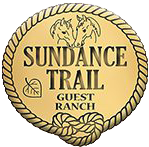Discover the evolution and charm of dude ranching with us at Sundance Trail Guest Ranch. This quintessentially American experience combines rustic charm with adventure, offering a unique look into how dude ranching has evolved from a Wild West retreat into a beloved vacation choice. At our ranch, we celebrate the rich history of dude ranching and its transformation over the years, blending outdoor escapades with genuine western hospitality. Join us to explore why dude ranching continues to captivate travelers seeking both relaxation and excitement in the great outdoors.
What is a Dude?
The term “dude” has evolved significantly over the years. Originating in the 1870s, Yellowstone Park rangers used “dude” to describe visitors from the east. By the 1880s, it referred to anyone not residing in the Rocky Mountains, including travelers, tourists, and new residents. By the 1920s, “dude” had narrowed to describe those who hired guides or paid to stay on a ranch.
The Origins of Dude Ranching
Dude ranching, which began in the mid-1800s, evolved from various sources over about 50 years. Two primary origins were the northern Rocky Mountain hunting expeditions and the southwestern plains cattle ranching.
Hunting and Northern Mountain Dude Ranches
The Rocky Mountains have held a romantic allure since the early 1800s, thanks to the famous Lewis and Clark expeditions.
Explore the Rockies on Horseback
In the Rockies, local settlers often guided immigrants, pleasure travelers, and hunters. The development of railroads made access easier, and by the 1850s, eastern hunters flocked to the Rockies, turning guiding expeditions into a thriving industry.
Comfort levels in hunting parties varied. Some eastern hunters embraced the western lifestyle, sleeping outdoors and sharing camp duties, while others, like Buffalo Bill Cody’s group, brought French chefs and waiters.
By 1869, permanent hunting camps and guest lodges had been established, serving as year-round homes for owners and base camps for hunting expeditions. These lodges became popular with hunters who often returned annually to their “second home out west.”
The creation of Yellowstone National Park in 1872 further fueled the fascination with the west. Known for its geysers, hot springs, and excellent hunting, Yellowstone attracted tourists and hunters, with the Northern Pacific Railway promoting travel to the park and nearby ranches.
Cattle Ranching on the Southwestern Plains
The post-Civil War cattle boom introduced another dimension to the west, with buffalo, longhorns, cowboys, wranglers, and ranchers. As the industrial east demanded more beef, the cattle industry spread across the southwestern plains.
Campfire Moments on the Plains
Early ranchers, isolated and lonely, welcomed visitors for news and companionship. The plains, rich in wildlife like deer, elk, and buffalo, attracted hunters, leading ranchers to form lasting relationships with sportsmen. The ranchers provided food, lodging, horses, and hunting grounds, while the sportsmen offered news, conversation, and game for the table.
The cattle boom ended disastrously after the winter of 1886-87, when blizzards killed millions of cattle. Financially strained ranchers began accepting money from visitors, integrating guest business into their operations. By 1891, catering to dudes had become a significant aspect of ranch life.
Modern Dude Ranching
The early 1900s saw dude ranches transition to primarily hospitality-focused operations, with hunting and livestock as secondary activities.
Enjoy a Bareback Meadow Ride
The U.S. Department of the Interior and the Northern Pacific Railroad heavily promoted national parks and dude ranches, making western tourism an industry. The advent of automobiles and the closure of Europe to vacation travel during World War I led Americans to explore their own country, boosting dude ranch popularity.
New ranches emerged with unique niches. Some featured hot springs, health camps, or boarding schools, while others offered photography hunts or summer camps. Today, dude ranches focus on hospitality, horseback riding, and outdoor beauty, with some offering specialized activities like tennis, swimming, and golf.
Characteristics of Modern Dude Ranches
Modern guest or dude ranches share several key characteristics:
- Fishing at a Local Hotspot
- Year-round home for the owners, treating visitors as family guests.
- Located in remote western areas, offering the sights and pleasures of the west.
- Provide food, rustic lodging, and horseback riding at a single price.
- Offer diverse activities beyond riding, including:
- Rock climbing and belaying
- White water rafting
- World-class disc golf
- Guided hiking
- Archery
- Rifle range target shooting
- Trap shooting
- Tomahawk throwing
- Family trout fishing at nearby lakes
- River fly fishing
- Horse care and horsemanship lessons
- Evening campfires with singing, poetry, and s’mores
- Kid’s campouts
- Horseshoes, foosball, and pool tables
- Emphasize a welcoming atmosphere, informal dress, and genuine hospitality, with guests known on a first-name basis.
The Sundance Trail Guest Ranch proudly continues these cherished traditions.
Source: Lawrence R. Borne; Dude Ranching: A Complete History; University of New Mexico Press; 1983.
Explore the timeless charm and rich history of dude ranching, and experience the western hospitality that has captivated visitors for over a century.
